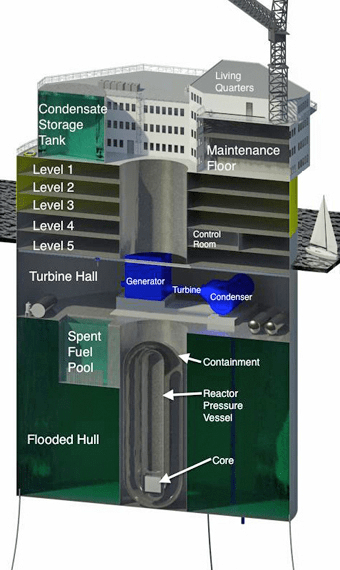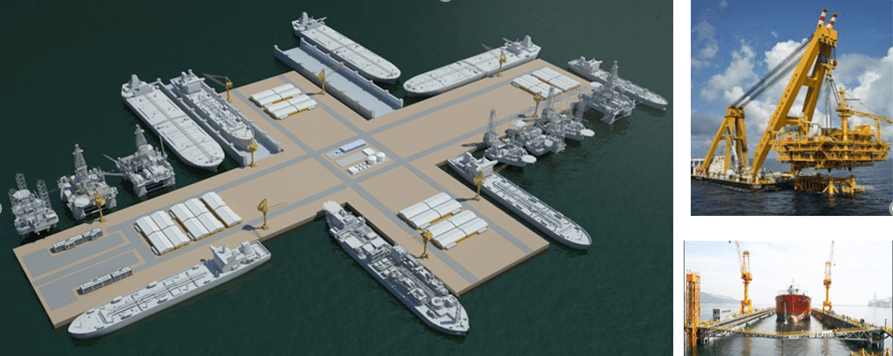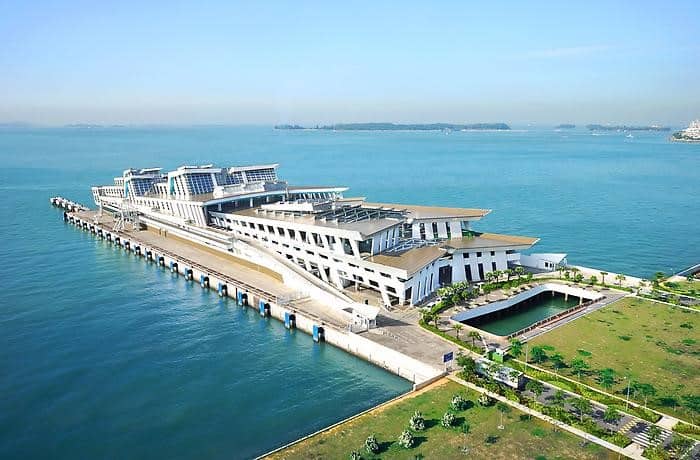Naval architecture, new challenges and a new horizon
by
Lim Soon Heng, BE, PE, FSSS, FIMarEST
Founder President, Society of FLOATING SOLUTIONS (Singapore)

Civilization has arrived at a point of inflexion triggered by global warming and rising sea levels. Scientist are ringing alarm bells and warning that a mere two-degree temperature rise over that of pre-industrial days could cause it to escalate irreversibly that could eventually lead to the extinction of many species on earth.
After 23 years (since COP1 in 1995 at Berlin) of tough negotiations, 200 countries have agreed in Poland in December 2018 at the United Nations Framework Convention on Climate Change to take concrete actions to limit carbon emission. This paper contends that naval architects can play a role to avert a cataclysmic event.
Global crisis and the role of naval architects
Where there is a crisis there are opportunities. This is true for naval architects.
Planet Earth has taken 4.5 billion years to arrive at where she is today: a blue planet of exquisite and unparalleled beauty, evidently, the only one with life on it in our galaxy.
In the last 200 years (a milli-second in astronomical time), many life forms are threatened. Man’s wanton disregard for greenhouse gases and its twin evil, the acidification of the oceans are exterminating them. The emission of greenhouse gases set in motion a series of processes with positive feedback loops accelerating the damage to the environment.
The concentration of CO2 for thousands of years has been below 280 ppm. Between the mid-18th century and now it has risen to 410 ppm. The pH of the ocean has dropped from 8.2 to 8.1 representing a 25% increase in acidity. The consequence of greenhouse gases is global warming which causes polar ice caps to melt. The loss of the ice caps results in less of the sun’s heat being reflected back. The atmosphere warms up. The permafrost melts, releasing methane which is a more damaging greenhouse gas. The increase in acidity levels in the ocean kills phytoplanktons on which zooplanktons depend for food. Zooplanktons are at the base of the food change for marine life. Their loss ultimately affects the food chain all the way up to mammals in the ocean and on land.
This insidious global calamity is not so apparent as the loss of habitat in the rainforest or has the same visual impact as plastic bags and bottles wash ashore on the beaches. It is however a far more serious threat to the planet’s eco-equilibrium than any other human activity.
A third threat to the stability of coastal eco-systems and marine biodiversity is land reclamation. Land reclamation has become such a menace, the United Nations Environment Programme (UNEP), an agency of the United Nations that is responsible for the organization’s environmental activities has called it members to ban the mining of sand. Many countries in Asia has taken steps to ban sand export. China and India go one step further by banning land reclamation even with domestically source sand and soil.
Sand mining in the Mekong and the Irrawaddy Rivers are proceeding at a rate faster than the natural sediments can make up for the sand that is being dredged away. This results in river banks, riverside farms and abodes collapsing into the water and washed away. The livelihood of fishermen is marginalised as the ecosystem that supports marine life is destroyed.
Engineers need to address these three calamities: greenhouse gas emissions, acidification of the oceans and land reclamations. Naval architects by their training are admirably well equipped to provide practical solutions. The surface of the earth is 70% covered by water and of all the engineers, the naval architect spends more time per person seeking solutions to challenges associated with seas and oceans. Naval architects have been striving to reduce greenhouse emission for the last two hundred years since the first coal-fired ship set sail, albeit unwittingly. The design of a ship’s bow, stern and midship to increase propulsion efficiency and reduce fuel consumption also reduces carbon dioxide emission.
There are much more naval architects can do to decelerate global warming. In their skill sets are tools to analyse the stability and motions of floating bodies, under the influence of wind, waves, wakes and currents. Their training also includes inclination experiments and methods of launching and determination of stresses during launching. The skidding out of a structure from land to a barge for transport or the lifting of a heavy block by a floating crane for integration to a floating structure are situations naval architects are familiar with. These are skill sets which civil or structural engineers are not equipped with. They are skills which would put naval architects in good stead in the design, construction, launching, towing and mooring of floating structures.
Renewable energy
Naval architects can contribute to the development of several types of renewable energy but not all. Obviously, hydropower or geothermal powers are not within their ken. But the major ones such as wind and solar are areas where the envelope can be pushed with floating structures.
The logical place to erect wind farms is the ocean where the farm does not compete with humans, crops and animals for land and where the wind is strong and dependable round the year. The water depth in these locations are too deep for piled bottom founded structures. The installation of such foundations in the ocean have high life-cycle costs. The floating wind turbine makes for lower life-cycle cost as they can be completely manufactured onshore and towed to site. The technology to moor floating bodies in deep water in harsh environments are already proven and the hardware readily available in the offshore oil and gas rig industry.
The global offshore wind power capacity was 18.8 GW in 2017. This is less than one-third of one percent of global capacity. It means the opportunities for growth are enormous. The largest wind farm the Hornsea Wind Farm is located in an area almost the size of Singapore in the North Sea where environmental conditions are harsh. It will have an installed capacity of 1200 MW (about 9% of Singapore’s total capacity.) Naval architects can offer services in the design of floating structures for manufacturers of wind turbines in Europe. The can also design mooring systems.
The potential of floating solar energy farms has yet to be fully realised. All floating farms to date are geometrically just a single flat plane floating on water. Most are designed by civil engineers who have limited knowledge of vertical floating structure. With vertical structures the solar panels can be mounted on many tiers. Each tier can be mechanised to track the sun as its transits from east to west. The single point mooring system could be employed to rotate the entire structure using a small out boat motor. A clever computer program could be used to dynamically orientate the structure and each cluster of solar panels every 15 minutes to maximise the incident solar energy.
Nuclear Power
Nuclear energy is the cleanest energy source and the safest when measured in terms of number of lives lost per unit of energy produced globally. It is also the most efficient in terms of land use intensity. Nuclear power takes 2.4 km2/TWhr/yr compared to of 36.9 km2 for photovoltaics and 72.1 km2 for wind (https://www.researchgate.net). It is therefor ideal for small countries with the financial resources. The fuel (uranium 235) is highly energy intensive which enables a reserve of ten years supply to be safely kept in a small confined underground or underwater space.
Nuclear reactors are used to power submarines, aircraft carriers and ice-breakers. Offshore floating nuclear power for non-military use would make a huge contribution towards reducing carbon emissions. The Russians have already launched one mounted on a barge. MIT has embarked on the design of another using a spar shaped hull as illustrated here.

Hydro carbon industries
Hydro carbon industries ranging from power plants to petrochemical plants are responsible for the bulk of anthropogenic CO2 emissions (35 billion tons in 2015.)
What can naval architects do to help combat this?
In spite of the traction that renewables have made in recent years, the complete elimination of the use of fossil fuel is still in the distant future. New oil and gas fired power plants will continue to enter the market. Naval architects should promote the idea that private investors and governments should seriously consider building power plants on floating islands. These islands may be as big as any on land (not including the fuel storage tanks which will have its own floating solution.) They are built with reinforced seawater resistant concrete in deep waters so that tankers can come alongside to refuel.
What advantages are there to migrate offshore?
There are many but for the purpose of this paper, I shall mention one: carbon sequestration with marine algae. How to capture carbon dioxide from the chimneys of power plants have been a subject of engineering interest for many years. The most promising one is to use marine algae since there is a limitless supply of marine algae and space in the sea is not an insurmountable issue as on land. The by-products of the process are oxygen and nutraceuticals (health supplements.)
The flue gas instead of going straight into the atmosphere is directed into a algae carbon capture farm for bioprocessing.
The design of the power plant and the floating algae farm are challenges which naval architects can turn into opportunities.
Land reclamation
Land reclamation has devasted many thousands of miles of coastline and inter-tidal zones both at where fill material (sand) is mined and over the seabed where it is placed. It has become such a menace, the United Nations Environment Programme (UNEP), has called it members to ban the mining of sand. Nearly all Asean countries forbid the export of sand. China and India have made land reclamation punishable by law.
There are many areas where large tracts of seafront are reclaimed for ports, shipyards and oil farms. The waters near the natural coast line are often too shallow for passage of ocean-going ships, hence the need to reclaim land in deeper waters.
Developments are taking place around the world in the design, construction and operation of floating ports and floating hydrocarbon tank farms in natural deep waters. There are significant opportunities for naval architects to play a role in the realisation of these innovative solutions that do not require reclamation. The challenges that such novel ideas present include movements of heavy loads such as quayside cranes, trucks and yard stacking cranes across the floating platforms in the case of ports. The loads imposed by container boxes in the stacking yards vary 24×7 and the designer has to ensure the floating platform is stable as load configuration changes.
The first container port is still in service in Valdez in Alaska. Floating tank farms have been in service in Japan since the 1980s. Naval architects should look these up online and analyse the issues and how they may be addressed.

The world has yet to see a shipyard that is totally afloat as illustrated above. The advantages are enormous. The entire shipyard is accessible by heavy lift floating cranes. Large blocks can be fabricated in say Batam and be lifted for integration at the quayside or the floating docks in Singapore in one seamless operation. Such cranes far exceed the capacity of goliath cranes that can only cover a designated area. Ships and quaysides float in tandem with the rise and fall of tides. Mooring ropes and gangways need not be adjusted during the tidal cycle.
Putting workshops on floats is not an issue. The challenge is to move very large ship blocks or modules of a few hundred tons from one point to another. In traditional shipyards this is often performed with SPMT (Self-propelled modular transporter.) This option is still possible, but it would require considerable stability analysis by naval architects. Moving blocks by floating cranes is of course the other option. Today floating docks for the building of large vessels are common. Several of Maersk Triple E container ships were built in floating docks (as opposed to graving dock.)

The Marina Bay Cruise Centre shown in the adjacent photo could have been built with the reclaiming land. The entire centre could have been built in the sea a hundred metres or so from shore and be connected by a floating bridge. The car park could be below the deck and the superstructure above could be used as hotel or shopping mall. On the hull, outside below the waterline, a veritable marine habitat of corals may be incorporated as a feature for visitors.
A floating cruise terminal could be relocated anywhere if the need arises. When it becomes dated, in 30 years the entire structure could be deployed to another country where it is given a new lease of life, just like the floating hotel built in Singapore that first saw service in Australia, then Vietnam and now North Korea.
Conclusion
The principles of naval architecture are the same; they apply to a floating skyscraper the same way they do to an offshore oil rig. A Japanese contractor has made presentations for a 1000-m high floating tower – with a capacity to accommodate 30,000 inhabitants – to various government agencies in Singapore.
Naval architecture took a quantum leap when it ventured into the offshore oil and gas industry. Oil and gas are not going to be the energy of the future. In fact, the two words would be as dead as coal in the energy industry. A world in ecological crisis beckons the naval architect to seek out new opportunities.
Very large floating structures as platforms will open a market larger than offshore oil and gas rigs for Singapore shipyards. It has to come given the difficulty associated with land reclamation.
Navigating the network of permitting authorities to obtain the necessary approval to moor structures in Singapore waters is a challenge. Naval architects not familiar with the landscape would do well to team up with their counterparts on land. The Society of FLOATING SOLUTIONS (Singapore) would be happy to facilitate this. Do feel free to contact its President at lsh@sixtrees.com.sg for assistance.
Lim Soon Heng
Disclaimer:
The views, information, or opinions expressed in this article are solely those of the author and do not necessarily represent those of TheNavalArch Pte Ltd and its employees

Lim Soon Heng
President, Society of Floating Solutions Singapore

Very good and fairly detailed article.
Hi Prabhat
Thanks for the appreciation.
Excellent article, I am ready to develop and provide a solution at this point …